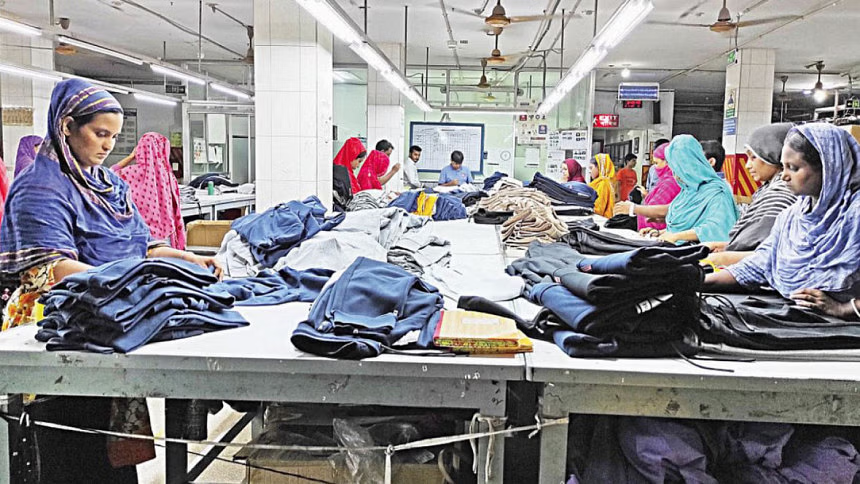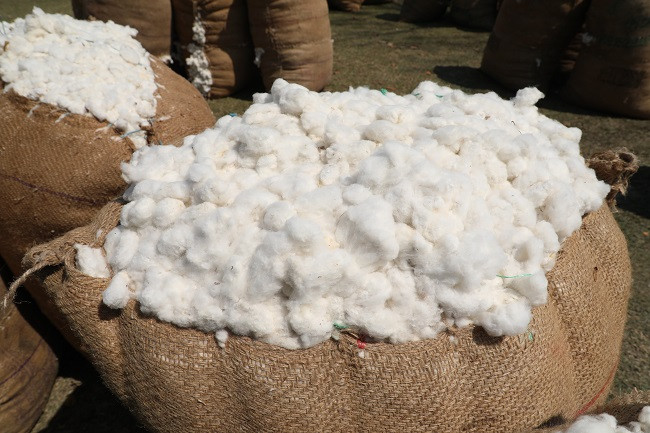What’s driving RMGs to losses, what’s ahead?
Many large garment factories in Bangladesh have scaled up their production, but the focus remains on low-cost, mass-produced items. Also, smaller factories are either struggling or shutting down altogether. With 40% of garment factories currently operating at a loss, the future of Bangladesh’s garment industry looks uncertain.
Dr Khondaker Golam Moazzem, research director at the Centre for Policy Dialogue, warns that the number of factories may shrink in the coming years if manufacturers fail to shift toward producing high-value, higher-margin goods. He attributes the sector’s growing risks to declining competitiveness, poor strategies, rising costs, and an over-reliance on the same low-cost products, with little effort to diversify.
“Even large factories that have expanded are still producing the same cheap products, and buyers are aware of this overcapacity,” he said.
The Business Standard spoke to 15 entrepreneurs and exporters of readymade garments and textiles. Nine of them reported that their factories are currently operating at a loss. Three are accepting orders at break-even points, while two are making any profits, although less than half of what they previously earned. Only one entrepreneur mentioned maintaining the same level of profit as before.
Twelve out of 15 entrepreneurs indicated they were not making profits. A loss, in this context, refers either to a decline in profits or a rise in costs, meaning 80% of those factories are now unprofitable.
The primary reasons for this downturn include a drop in global demand for apparel translating to fewer orders along with a sharp increase in gas and electricity rates and supply shortages of inputs. Production costs have also surged by nearly 50% due to an increase in wage and utility expenses.
Further challenges include difficulties with banks’ credit limits, higher bank liabilities and fear of defaulting on loans.
Increased production costs and falling orders are causing many apparel makers to lose money or barely break even. The recent devaluation of the taka against the dollar, while expected to help apparel exporters, has been overshadowed by rising energy costs and wages and garment makers fear much worse to come including loan defaults and factory shutdowns.
This situation dragged on for a couple of years and it has worsened further by a series of events since July and some regulatory measures. The issues, if not tackled, might create new loan defaulters in the apparel industry apart from causing export revenue drop and job losses, industry insiders and trade analysts warned.
Going out of business
The spate of incidents following the July-August student uprising and the labour unrest in some areas of Gazipur and Savar for a span of over three weeks have made it difficult for some factories paying workers’ wages next month which may provoke fresh discontent.
According to the labour and employment ministry, 70 industries, including garment factories, have not paid their August salaries till 30 September.
According to data from the Bangladesh Garment Manufacturers and Exporters Association (BGMEA) and the Bangladesh Knitwear Manufacturers and Exporters Association (BKMEA), around 250 of their member factories have closed in the last two years. Leaders of these trade bodies stated that although some factories have resumed production during this period.
“In my 36 years in this sector, I have faced many tough times, but I have never experienced anything as difficult as the current situation.”
Mohammad Hatem, BKMEA president
In the past two weeks alone, major groups like Crony Group and Birds Group have shut down their factories reflecting the severity of the situation.
Similarly, the owner of Adams Apparels Limited and Adams Styles, located in Mirpur, Dhaka was compelled to shut down one of the factories earlier this year due declining orders and mounting bank liabilities.
Shahidul Haque Mukul, managing director of the factory, said, “The problem started with Covid-19. After the Russia-Ukraine war, orders started to decline. We were not getting support from banks. There was customs harassment – we couldn’t cope with these and at one point workers’ salary fell in arrears. Later, the production had to be reduced.”
Losing profitability
It is not only small factories that are at risk; relatively large factories are also in danger. Many have started to lose money largely due to declining orders and the utility crisis.
Fatullah Apparels Limited, located in Narayanganj on the outskirts of the capital, reported a loss of Tk3.62 crore for FY24 as prices offered by buyers did not cover the cost of production.
Fazlee Shamim Ehsan, chief executive officer of the company, said, “This loss figure stands even after factoring in gains from the devaluation of the taka against the dollar and government incentives.”
Fatullah Dyeing Limited, another factory owned by the same entrepreneur, incurred an even greater loss of Tk7.5 crore during the same period. According to Ehsan, while the price of gas has surged, supply has been insufficient, forcing the factory to operate at less than half its capacity.
Bankers see decline
Bankers involved in back-to-back LCs for garment exports or raw material imports have revealed a recent decline in the profitability of garment manufacturers.
A senior official at a key branch of City Bank in the capital, who manages five major exporter groups – have seen three of the businesses affected by recent unrest.
The official, who spoke to TBS on the condition of anonymity, said, “Buyers are taking advantage of the currency devaluation as the flow of orders is low.”
He added, “A reputed company recently faced issues due to the unrest. As several companies were unable to export on time, their bank liabilities have increased.”
An officer at an IFIC Bank branch in Uttara also mentioned that the liabilities of some factories have increased recently. A forced loan was issued after a factory failed to pay its instalment on time.
“But none of the 10 garment factories faced such a situation even two years ago,” he added.
Explaining the reason for this, he said, “As far as I know, most of the benefits from currency exchange are going into the buyers’ pockets. As a result, businesses are unable to offset the increased cost of production.”
He also reiterated that the liabilities of several factories have risen.
Syed Mahbubur Rahman, managing director of Mutual Trust Bank, attributes the decline in the profitability of garment manufacturers to their inability to run factories at full capacity. He believes that those with a high loan component may be at risk in this situation.
Declining profits
Several leading exporters in the country, speaking to TBS on the condition of anonymity, revealed that the return on investment in garment factories is typically calculated over three to four years, with a standard net profit margin of 6-9%. While this profit range was achievable in the past, few seem able to reach it now.
“My profit has dropped to 2.5%,” said the owner of a factory that employs 15,000 workers.
However, the owner of a smaller factory with 450 workers that produces relatively high-end products, reported maintaining profitability. Speaking on condition of anonymity, he said, “I make relatively high-end, unique garments, and my buyers are factoring in the increased production costs when placing their bids.”
50% rise in cost of production
RMG factory owners say production costs have increased by 50% over the last two years while prices in some cases have decreased. Some factories are offsetting these losses through gains from currency devaluation and government incentives. However, factory operations have been disrupted since July.
For the past month, labour unrest has disrupted production in factories in Gazipur and Savar areas where most large factories are located. Additional costs, such as allowances for tiffin bills, have further strained operations.
BKMEA Presidnt Mohammad Hatem said, “In my 36 years in this sector, I have faced many tough times, but I have never experienced anything as difficult as the current situation.”
Rakibul Alam Chowdhury, managing director of Chattogram-based HKC Apparels Limited, told TBS, “Orders have decreased by 30%. We are incurring losses but still taking orders. In this situation, we have to borrow to pay wages and utility bills, which is leading to an increase in our bank liabilities.”
Fear of being loan defaulters
Most entrepreneurs fear the pressure of paying salaries and repaying bank loans may escalate in the coming months potentially increasing the number of defaulters due to this dual pressure.
Starting in September, failing to pay just three instalments will classify borrowers as defaulters, Mohammad Hatem pointed out.
“Harder times are ahead. I may also become a defaulter,” he said.
The situation is similarly bleak for entrepreneurs in the textile sector, which is struggling primarily due to the gas crisis. Many are also facing challenges in accessing funds from banks against local back-to-back letters of credit (LCs).
Azahar Khan, chairman of Mithela Textile Industries, expressed his concerns to TBS: “I don’t know how I will pay salaries next month if we don’t receive funds from banks. The growing discontent is concerning.”
He added, “My factory is on life support due to the gas crisis.”
Monir Hossain, managing director of Fariha Spinning Mills, described a different but equally troubling issue, saying, “The bank is not releasing my funds after processing local back-to-back LCs, despite receiving the buyer’s acceptance. I currently have $5 million stuck, which prevents me from paying the gas bill and repaying loans taken under the Export Development Fund (EDF), which carries an interest rate of 5-6%. If we fail to repay the EDF on time, the regular interest rate will apply.”
“If this continues, we may have to shut down the factory within six months due to the debt burden. In my 40 years of entrepreneurial experience, I have never encountered such a situation,” he lamented.
Below fair market rate
Some factory owners have significantly expanded their production capacity, anticipating future growth. However, after the onset of the Ukraine war, orders declined, and in an effort to minimise losses, many entered into fierce competition, accepting orders at prices below fair market rates.
Md Shehabudduza Chowdhury, managing director of Amity Fashions Limited, said, “We began competing among ourselves to secure orders. As a result, buyers noticed that orders were being placed at reduced prices, and they took advantage of the situation.”
At least 10 out of 15 entrepreneurs reached by TBS have been affected by this. Those unwilling to offer lower prices, lost out on orders, while others created an unhealthy environment in the sector by accepting orders at prices below production costs.
Are currency devaluation benefits going to buyers’ pockets?
Professor Mustafizur Rahman, a distinguished fellow at the Centre for Policy Dialogue, said, “Some challenges faced by garment exporters have intensified recently.”
He asked, “The currency has devalued by 35% against the USD in the past two years. Why should exporters be worse off after receiving this benefit? Does this advantage simply enrich foreign buyers?”
He emphasised that entrepreneurs in Bangladesh need to enhance their negotiation capacity.
MA Razzaque, an international trade expert and chairman of Research and Policy Integration for Development, believes the current situation is largely due to a decline in global demand for clothing.
“It is not just Bangladesh’s exports that have decreased; other competing countries have also experienced declines. However, our decline has been at a higher rate,” he added.




















